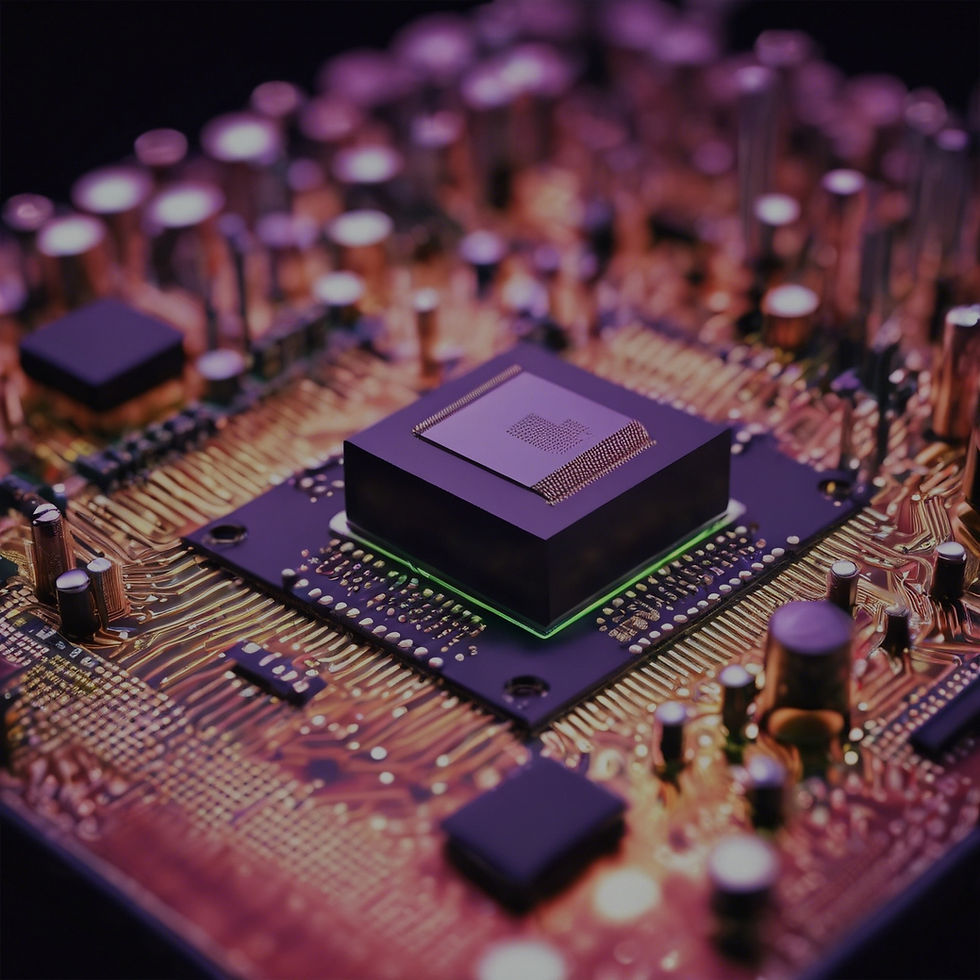Can Generative AI Replace PCB Designers? What to Expect in the Next 5 Years
- Gulshan Sharma
- May 14
- 3 min read
Introduction
Printed Circuit Board (PCB) design is the beating heart of modern electronics, enabling everything from smartphones to spacecraft. As the complexity of electronics increases, traditional PCB design methods are reaching their limits. Enter Generative AI—an advanced form of artificial intelligence capable of designing, optimizing, and even simulating complex PCB layouts.
But here's the big question: Can Generative AI actually replace human PCB designers in the next 5 years?

What is Generative AI in PCB Design?
Generative AI refers to machine learning models that can autonomously create new designs by learning from existing data. In the context of PCB design, these systems:
Analyze thousands of board layouts
Understand design constraints and performance goals
Generate new board topologies and routing paths
Optimize for size, heat dissipation, EMI, and manufacturability
Tools like Autodesk Fusion 360, Synopsys DSO.ai, and Cadence Cerebrus are already integrating AI to accelerate electronic design automation (EDA).
Human Designers vs Generative AI: Who Wins Today?
Criteria | Human Designers | Generative AI |
Creativity & Intuition | High – based on experience | Medium – pattern-based generalization |
Speed & Iteration | Slower, manual | Lightning fast with parallel iterations |
Error Detection | Dependent on reviews | Real-time predictive analysis |
Design for Manufacturability | Relies on expertise | Learns from past fabrication feedback |
Adaptability to Constraints | High but time-consuming | Excellent when constraints are well-defined |
AI still lacks the nuanced contextual understanding and domain creativity that experienced engineers bring. But in data-rich, rules-heavy environments, AI is increasingly competitive.

What Generative AI Can Do Today in PCB Design
Component Placement Optimization: AI minimizes wire lengths, signal delay, and crosstalk better than many traditional rule-based systems.
Auto-Routing with Performance Constraints: Advanced routing engines driven by ML can simulate and iterate faster than human-in-the-loop workflows.
Design Space Exploration: Instead of trying one or two board variants, AI can explore thousands of configurations in hours.
Thermal and Power Integrity Simulations: AI can predict potential hotspots and help in thermal-aware routing.
Where Generative AI Falls Short
Despite the hype, current limitations include:
Lack of design intent understanding: AI doesn’t always grasp why certain design trade-offs were made.
Over-reliance on training data: AI needs large, clean datasets, which may not be available for niche applications.
Limited collaboration with mechanical/electrical teams: Engineering is not just design—it’s teamwork. AI doesn’t play well in cross-functional teams yet.
What the Next 5 Years Hold
Trend 1: AI as a Copilot, Not a Replacement
Expect tools like GitHub Copilot for hardware—AI will assist, not replace. Engineers will steer, and AI will suggest.
Trend 2: Context-Aware AI
Next-gen generative models will better understand design constraints, regulatory standards, and manufacturing rules.
Trend 3: Hybrid Design Teams
Humans will design critical paths and strategies; AI will take over high-volume, repetitive layout tasks.
Trend 4: Verticalized AI Solutions
AI platforms will specialize: medical devices, automotive PCBs, aerospace, etc., trained on industry-specific datasets.
Will Human PCB Designers Become Obsolete?
No, but their role will evolve.
Future PCB engineers will be:
AI toolsmiths, not just circuit designers
Data curators, training AI with domain-specific knowledge
System architects, focusing on big-picture thinking while AI handles detail-heavy tasks
Final Thoughts
Generative AI is not here to take jobs away—it's here to augment the creativity, speed, and precision of human PCB designers. The next five years will likely see a paradigm shift from manual layout to AI-assisted workflows, with humans still in control of critical design decisions.
🔍 Stay ahead of the curve: if you're a PCB designer, now’s the time to start learning how AI tools work. The future will belong to hybrid engineers who know both circuits and code.
For Electronics development, BOM Procurement, PCB Fabrication and Designing, Enclosure and Turnkey Manufacturing projects, please reach out to gulshan@xelec.in; sales@xelec.in.



Comments